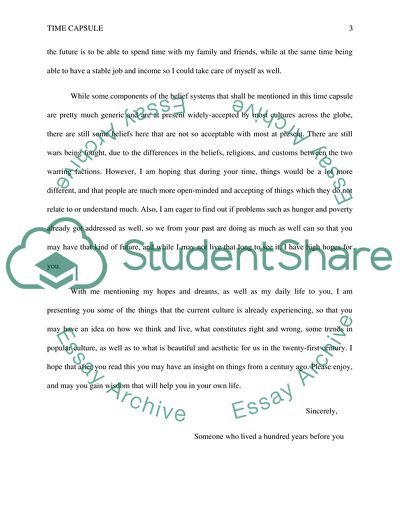Cite this document
(Time Capsule: The Twentieth Century and Beyond-Popular Culture and the Assignment, n.d.)
Time Capsule: The Twentieth Century and Beyond-Popular Culture and the Assignment. Retrieved from https://studentshare.org/social-science/1611365-hu300-27-art-and-humanities-twentieth-century-and-beyond-popular-culture-and-the-humanities
Time Capsule: The Twentieth Century and Beyond-Popular Culture and the Assignment. Retrieved from https://studentshare.org/social-science/1611365-hu300-27-art-and-humanities-twentieth-century-and-beyond-popular-culture-and-the-humanities
(Time Capsule: The Twentieth Century and Beyond-Popular Culture and the Assignment)
Time Capsule: The Twentieth Century and Beyond-Popular Culture and the Assignment. https://studentshare.org/social-science/1611365-hu300-27-art-and-humanities-twentieth-century-and-beyond-popular-culture-and-the-humanities.
Time Capsule: The Twentieth Century and Beyond-Popular Culture and the Assignment. https://studentshare.org/social-science/1611365-hu300-27-art-and-humanities-twentieth-century-and-beyond-popular-culture-and-the-humanities.
“Time Capsule: The Twentieth Century and Beyond-Popular Culture and the Assignment”, n.d. https://studentshare.org/social-science/1611365-hu300-27-art-and-humanities-twentieth-century-and-beyond-popular-culture-and-the-humanities.


